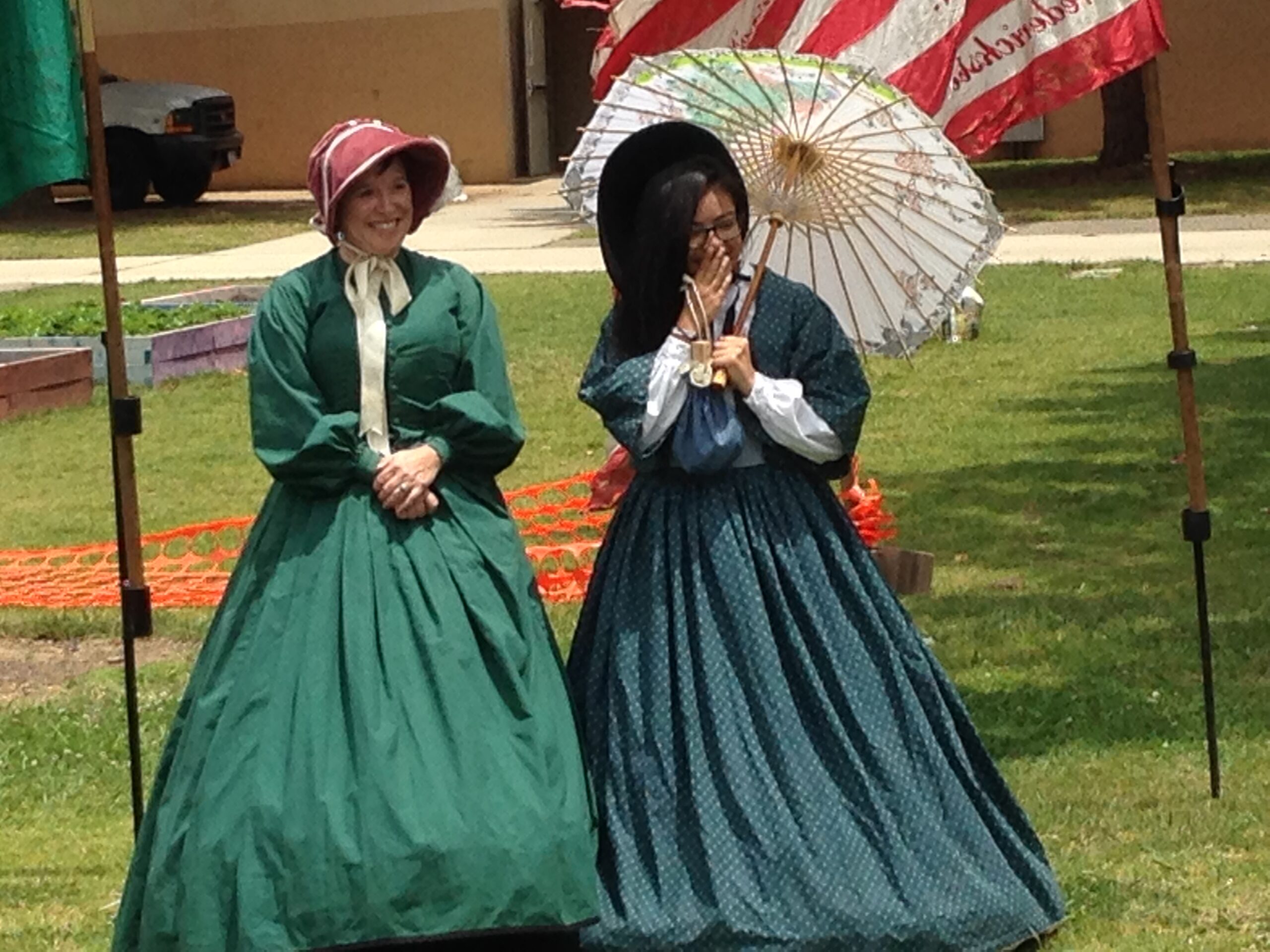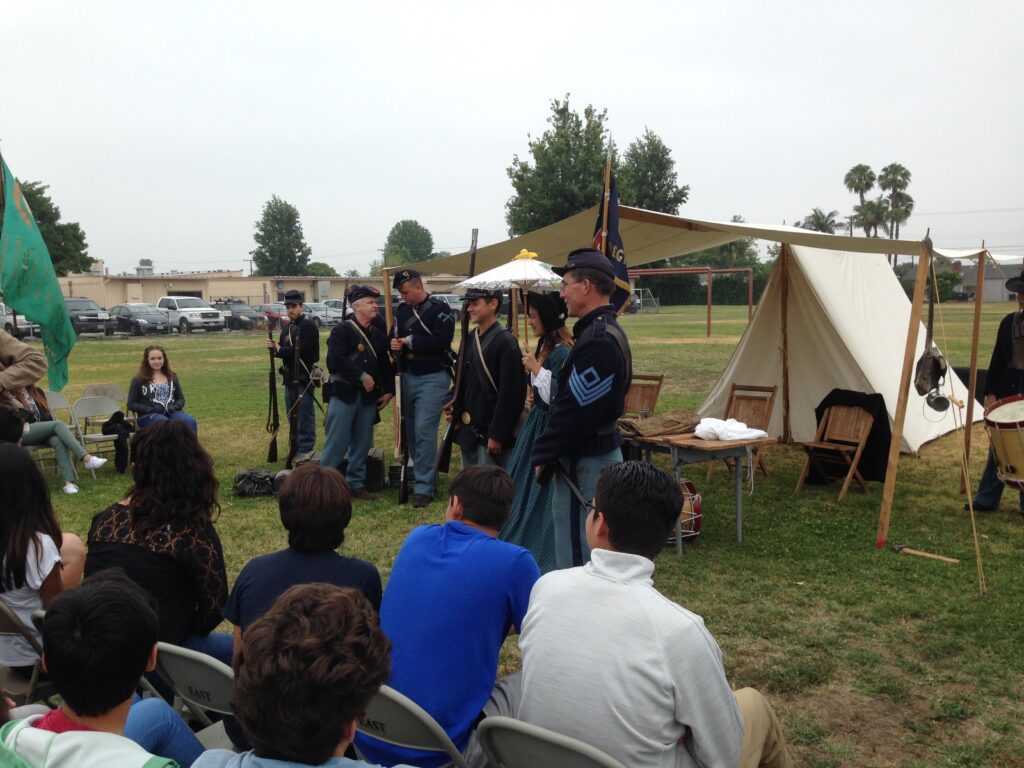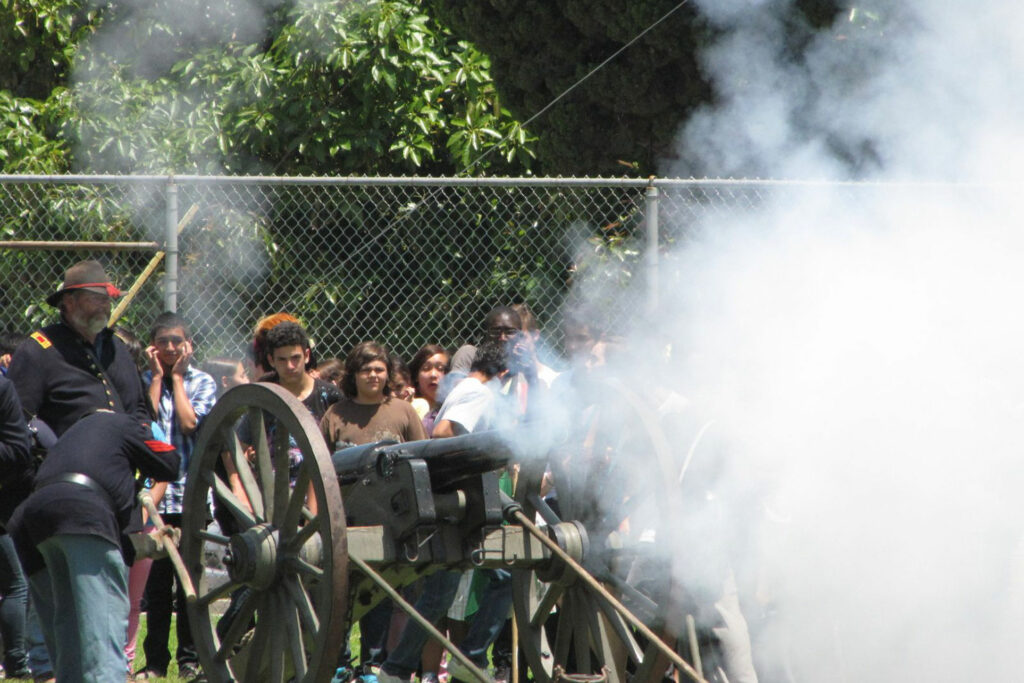American Civil War School Program
Presented By
C.R.A.I.C. – California Re-enactors for American and Irish Cultures
The mid 19th century was a critical time in our country’s history, and the Civil War and its outcome were defining moments that would shape the future of the United States and help mould us into the nation we are today.
The war not only brought to the fore the important issues of slavery and states rights but it also spotlighted the differences between the industrialized heavily populated North and the agrarian culture of the sparsely populated South.
It saw advancements in arms and munitions manufacturing and also in the production of food, textiles and everyday goods and services. Medicine, sanitation, communications and transportation systems all underwent dramatic changes and improvements during that turbulent time as well.
And while the great political and military leaders in Washington and Richmond and on battlefields both North and South, were making historical decisions that would affect the outcome of the war and the future of the country, what of the plight of the common soldier and the ordinary citizen?


What did they think about it all?
How did the struggle affect their culture, their society and their daily lives?
And just what were their daily lives like?
What did they wear?
What did they eat?
What kind of weapons did they use in battle
And what kind of pastimes did they enjoy in camp?
California Re-enactors for American and Irish Cultures (C.R.A.I.C.) is proud to present the American Civil War School Program, where these questions plus many more will be answered in a fun, entertaining, hands-on learning experience.
Members of C.R.A.I.C., in first person persona and attired in authentic period dress and accoutrements, will come to your school and show what life was like on the battlefield, in camp and in everyday society between 1861 and 1865.
Students and teachers alike will be fascinated to learn interesting facts like:
What did the common soldier carry in his haversack?
What was the average rate of fire for an infantryman?
What was the most common use of a bayonet?
And how many layers of clothing did a lady actually wear and how did she use her fan to communicate?

Presentations of drill and the Manual of Arms, taken directly from Casey’s Infantry Tactics, a drill manual used by both sides during the war, and the black powder musket demonstration are always great crowd pleasers.
Each exciting presentation concludes with an informative question and answers session.
Just to read about the Civil War is only one way to study it, but to see, feel, smell and hear about it ”first hand” is a whole new learning experience.




Contact C.R.A.I.C. now and bring your next Civil War history lesson to life.
Presentation content and duration can tailored to suit your schedule.
Presentation rates are negotiable.
For more information please contact:
Brig. Gen.. Shane Padden, Commander – Union Army of the West
(951) 445-1516
mpadden@verizon.net
Capt. Chip Duncan, Commander 69th NYSV Co. C., Union Army of the West
(760) 730-0223
cduncan33@att.net
References available.
C.R.A.I.C. is a non profit organization
